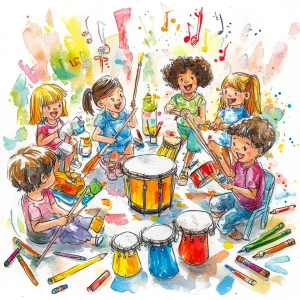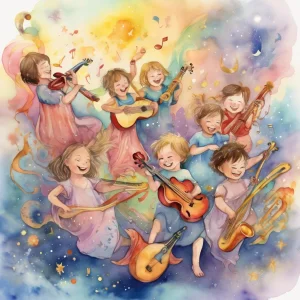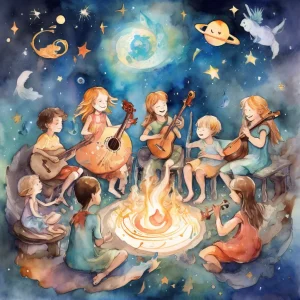Activity
Similar Activities
Empathy Through Storytelling: Musical Sensory Experience
Children’s Age: 2–3 years
Activity Duration: 5 – 15 minutes
Let's dive into Musical Sensory Storytime! Get ready for a fun experience that will engage all your senses. We will read a story, play musical instruments, create art, and enjoy co…
Activity Duration: 5 – 15 minutes
Seasonal Poetry: A Language Exploration Journey
Children’s Age: 6–10 years
Activity Duration: 30 minutes
Explore the "Language Exploration Through Seasonal Poetry" activity to enhance children's communication and empathy skills through seasonal poems. Gather materials like poems, pape…
Activity Duration: 30 minutes
Enchanted Seasons: Seasonal Nature Hunt
Children’s Age: 6–10 years
Activity Duration: 25 – 30 minutes
"Seasonal Nature Hunt" is a delightful activity designed for children aged 6 to 10, focusing on cognitive development, nature appreciation, and logical reasoning. Kids can explore …
Activity Duration: 25 – 30 minutes
Seasonal Wonders: Digital Animation Showcase
Children’s Age: 12–16 years
Activity Duration: 35 minutes
Engage children aged 12 to 16 in the "Digital Seasonal Animation Showcase" to create digital art and animations while enhancing cognitive skills and ecological awareness. Set up wi…
Activity Duration: 35 minutes
Nurturing Nature: Planting Seeds of Empathy for the Earth
Children’s Age: 7–10 years
Activity Duration: 30 minutes
The "Planting Seeds of Empathy for the Earth" activity is designed to teach children about empathy, ecology, and environmental protection through hands-on seed planting. Children w…
Activity Duration: 30 minutes
Nature Language Exploration and Journaling Adventure
Children’s Age: 4–12 years
Activity Duration: 15 – 30 minutes
Let's go on a Nature Journaling Adventure! We'll explore nature, practice writing, and learn new words in a foreign language. Grab your nature journal and pencils, and if you like,…
Activity Duration: 15 – 30 minutes
Sensory Music-Making Session: Sound Story Drawing Adventure
Children’s Age: 2–2.5 years
Activity Duration: 5 – 20 minutes
A sensory music-making activity using household items to enhance sensory development and introduce children to the world of music.
Activity Duration: 5 – 20 minutes
Enchanted Musical Storytime Adventure: A Journey Through Sound
Children’s Age: 2–3 years
Activity Duration: 10 minutes
"Musical Storytime Adventure" is a delightful activity designed for children aged 24 to 36 months to enjoy a fun and educational experience. Set up by gathering picture books and c…
Activity Duration: 10 minutes
Musical Instrument Exploration: Symphony of Sensory Play
Children’s Age: 1.5–2 years
Activity Duration: 10 minutes
Explore the Musical Instrument Exploration activity for children aged 18 to 24 months, promoting play skills, self-regulation, and communication development through a sensory-rich …
Activity Duration: 10 minutes
Melodies of Wisdom: Musical Storytelling Circle
Children’s Age: 10–14 years
Activity Duration: 20 – 45 minutes
The "Musical Storytelling Circle" activity is designed for children aged 10 to 14 to boost communication skills through interactive storytelling with music and instruments. Partici…
Activity Duration: 20 – 45 minutes
Ecosystem Adventure Board Game - Nature's Quest
Children’s Age: 7–9 years
Activity Duration: 10 – 25 minutes
An interactive board game where children explore and learn about ecosystems through challenges and tasks.
Activity Duration: 10 – 25 minutes
Cultural Creatures: Stop-Motion Animation Adventure
Children’s Age: 4–9 years
Activity Duration: 10 – 25 minutes
An interactive activity using technology to create stop-motion animations exploring plants and animals from diverse cultures.
Activity Duration: 10 – 25 minutes


























